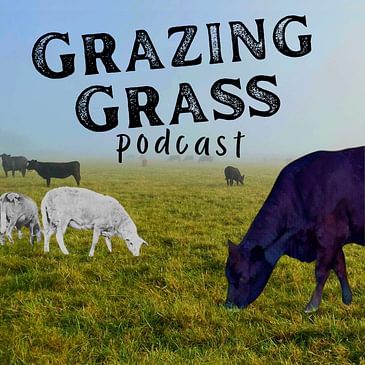Join us on the Grazing Grass Podcast as we continue our journey into the fascinating world of livestock color genetics. In this episode, we explore the practical aspects and implications for breeders, focusing on the two primary pigments—eumelanin (black) and pheomelanin (tan)—that determine livestock coat color. We simplify the terminology for ease of understanding and revisit key genetic loci, such as the extension and agouti loci, which play significant roles in coat color variations in cattle. Additionally, we discuss unique alleles like black-red, where calves change color as they age, and dominant red, which overrides the extension locus. Drawing insights from Dr. Sponenberg's "Practical Color Genetics for Livestock Breeders," we offer a comprehensive guide for beef and dairy cattle breeding.
In our discussion on cattle color dilution genetics, we shed light on the Simmental and Charolais dilution alleles, which impact coat colors, resulting in lighter shades like orange, yellow, and various grays. We also touch on other breeds such as Galloway and Dexter, which have their unique dilution genes that can sometimes lead to unexpected coat colors. Furthermore, we explore the genetic complexity in breeds like Brown Swiss and Murray Greys, and mention the recently identified Larson Blue dilution gene, enriching our understanding of the intricate genetics behind cattle coat colors.
Our exploration doesn't stop there; we also delve into the intriguing patterns of white spotting genetics in cattle. From the "wading" allele, which creates white patterns on the lower legs and belly, to the "white sides" allele characterized by animals with white sides and pigmented legs, we cover a wide range of patterns. We discuss speckled patterns such as "colorsided," "fisheagle," and "spitting cobra," along with the roan category and its variations like "marocha" and "salineiro." Finally, we examine modifiers like "brockle," "ticking," and "smudge," which add complexity to these patterns. This episode promises a rich and informative discussion on the genetic factors shaping the diverse and beautiful coat colors of livestock.
Visit our Sponsors:
Noble Research Institute
Kencove Farm Fence





